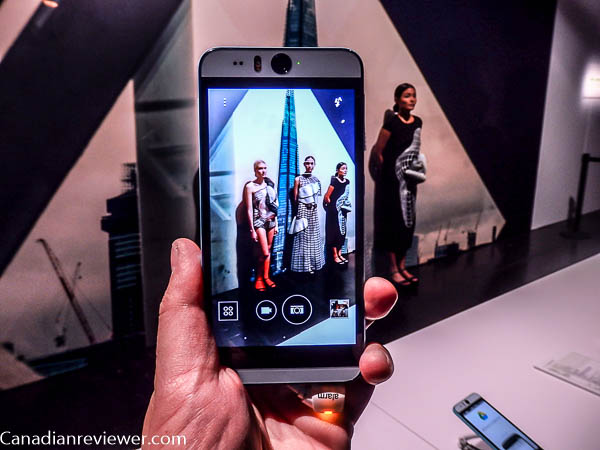HTC launches dual-camera Desire Eye smartphone
 Wednesday, October 8, 2014 at 7:37PM
Wednesday, October 8, 2014 at 7:37PM 
By Gadjo Cardenas Sevilla
New York- HTC hosted a 'Double Exposure' launch event here earlier today where they launched a bevy of imaging related products. The HTC Desire Eye is a new 5-inch smartphone that features dual wide-angle 13 Megapixel cameras as well as various software features designed for users who rely on their smartphones as their main still or video camera. While the HTC Desire Eye isn't slated for release in Canada yet, it is an interesting device for the features it offers. It also inherits the processor specs and BoomSound speakers of the HTC One M8.

Also announced was a new and improved Zoe 1.0 app, which originated in last year's HTC One M7 and is now available to various Android devices and is even coming to iOS and the iPhone by the end of the year. The Zoe software takes photos and videos and automatically puts together a short presentation complete with a soundtrack.
It also allows for tapping multiple sources or feeds of the same event (i.e. a concert) to create a collaborative video that is easily shared. The video promoting the feature showed various creative types and hipsters discussing the merits of multi-stream content collaborations.

While an interesting concept, the HTC Desire Eye is yet another camera that’s clearly designed to cash in on the burgeoning selfie craze. HTC, like Samsung with its wider aperture selfie cams, and Apple with the ability to shoot burst-mode selfies, understands that there is a market for these features. The HTC Desire Eye does manage to keep both 13 megapixel cameras flush with the thin body, no unsightly protrusions here.

The ability to shoot from both front and back cameras simultaneously isn’t new, but HTC adds some options that make this an intriguing feature, such as being able to superimpose your face or body on the image shot the opposite side or shoot simultaneous video.
The question is, are these features enough to create a compelling market pickup for HTC. The Desire Eye is undoubtedly a midrange device, it is devoid of the luxurious metal finish of the HTC One and, while offering a stylistic palette of colours appealing to younger users, is composed mostly of dual-coloured plastics. It does have a bit of an iPhone 5c vibe to it, even if it is bigger.

Fashion focus is very much at play here and we’re also seeing this trend across the smartphone segment. So, while it is unfortunate that Canada won’t be seeing the HTC Desire Eye anytime soon, it gives us a good opportunity to wait and see how the product does in the US and if it will entice users to switch from their current devices to a more imaging focused devices.
As an HTC One M8 user, I feel the Desire Eye is different enough and has its own characteristics that will not cannibalize sales of the HTC One line (which is also getting a number of neat software updates). What's curious is that HTC has distanced itself from the Ultrapixel camera and now seems to have gone the path most smartphone makers have taken, which is regular sensors and the largest megapixel capacities they can offer.

Is the HTC Desire Eye a camera that appeals to you? Do the dual cameras and new software sound like important features that will make you consider this new smartphone or do you feel these features are too gimmicky for most users. Share your thoughts below.





















Reader Comments